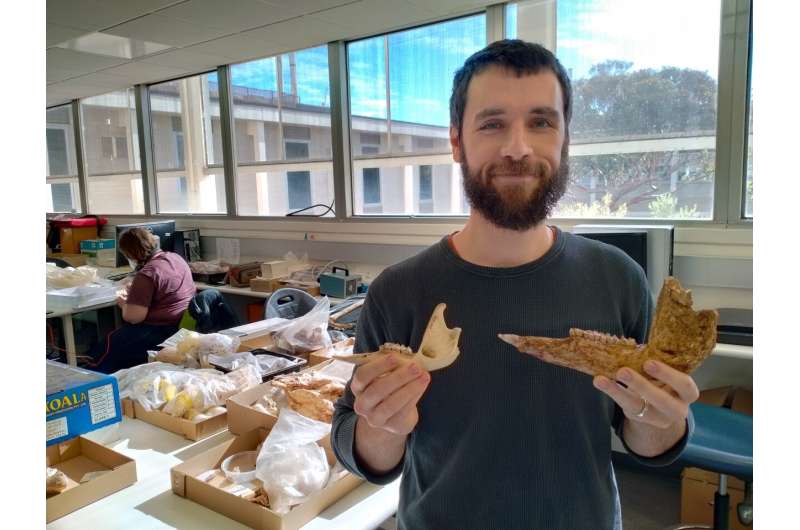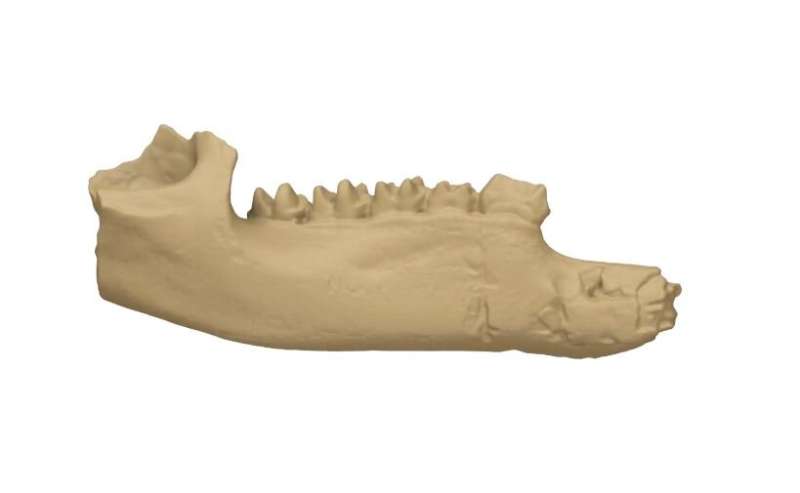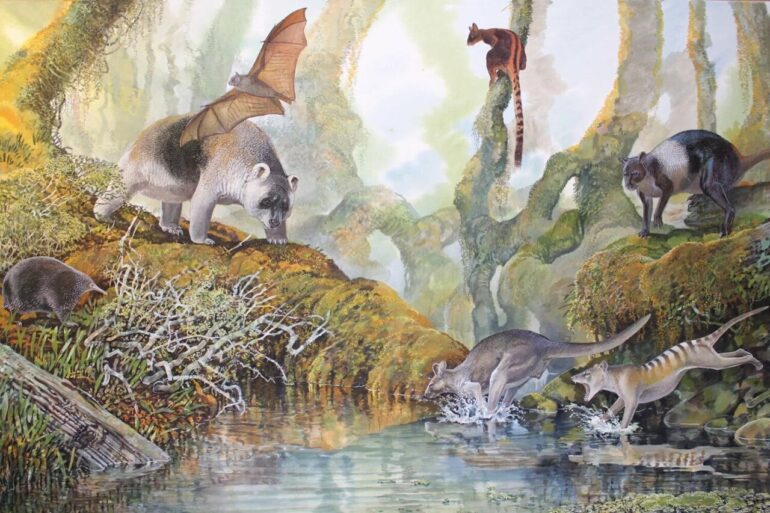Australian paleontologists from Flinders University have described a new genus of giant fossil kangaroo from the mountains of central Papua New Guinea.
The new description of the fossil kangaroo has found that rather than being closely related to Australian kangaroos, it most likely belongs to a unique genus of more primitive kangaroo found only in Papua New Guinea.
The kangaroo, first described in 1983 by Professor Tim Flannery, is known from fossils around 20,000-50,000 years old. They come from the Nombe Rockshelter, an archaeological and paleontological site in Chimbu Province, Papua New Guinea (PNG).
Nombe is already known for multiple extinct species of kangaroo and giant four-legged marsupials called diprotodontids.
Flinders University researchers have renamed the animal Nombe nombe, after the location of its discovery—and plan to return to PNG for further excavations and research next year.
The squat, muscular Nombe lived in a diverse montane rainforest with thick undergrowth and a closed canopy. Here, it evolved to eat the tough leaves from trees and shrubs, with a thick jaw bone and strong chewing muscles.
Much of the animal life of New Guinea is little-known outside the island, despite its color and distinctiveness. This discovery breathes some new life into the exploration of New Guinea’s faunal history.

Flinders University palaeontology researcher Isaac Kerr with an Australian kangaroo jaw bone, and an Australian megafauna fossil jaw used in the latest Royal Society study. © Flinders University
“The New Guinean fauna is fascinating, but very few Australians have much of an idea of what’s actually there,” says Flinders paleontology Ph.D. candidate Isaac Kerr.
“There are several species of large, long-nosed, worm-eating echidna that are still around today, many different wallaby and possum species that we don’t get in Australia, and more still in the fossil record.
“We think of these animals as being uniquely Australian, but they have this intriguing other life within New Guinea.”
Using 3D imagery and other technology, the researchers have studied remains from the PNG Museum and Art gallery. They now believe that the species may have evolved from an ancient form of kangaroo that dispersed into New Guinea in the late Miocene epoch, around 5-8 million years ago.
During that time, the islands of New Guinea and mainland Australia were connected by a “land-bridge” due to lower sea levels, rather than separated by the flooded Torres Strait as they are today. This “bridge” allowed early Australian mammals, including various giant extinct forms, to move into the rainforests of New Guinea.
When the Torres Strait flooded again, however, these populations of animals became disconnected from their Australian relatives, and so evolved separately to suit their tropical, mountainous PNG home.
Nombe is now considered the descendant of one of these ancient lineages of kangaroos.

3D render of the PNG kangaroo fossilized jaw bone used in the new Flinders University study. © I Kerr, Flinders University
Sporadic paleontological work was undertaken there by American and Australian researchers in the 1960s, ’70s and ’80s, much of which resulted in fascinating discoveries of extinct megafauna. However, no paleontological digs have taken place there since the early ’90s, a situation the Flinders University researchers seek to remedy.
Co-author on the new Transactions of the Royal Society of South Australia article, Flinders University Professor Gavin Prideaux, says the research will expand thanks to a grant from the Australia Pacific Science Foundation.
“We’re very excited to undertake three paleontological digs at two different sites in eastern and central PNG over the next three years,” he says.
“We’ll be working with the curators of the Papua New Guinea Museum and Art Gallery and other contacts in PNG, with whom we hope to build some local interest in New Guinean paleontology.”
More information:
A new genus of fossil kangaroo from late Pleistocene New Guinea, Transactions of the Royal Society of South Australia (2022). DOI: 10.1080/03721426.2022.2086518
Provided by
Flinders University
Citation:
Researchers describe new kangaroo fossil from Papua New Guinea (2022, June 28)
